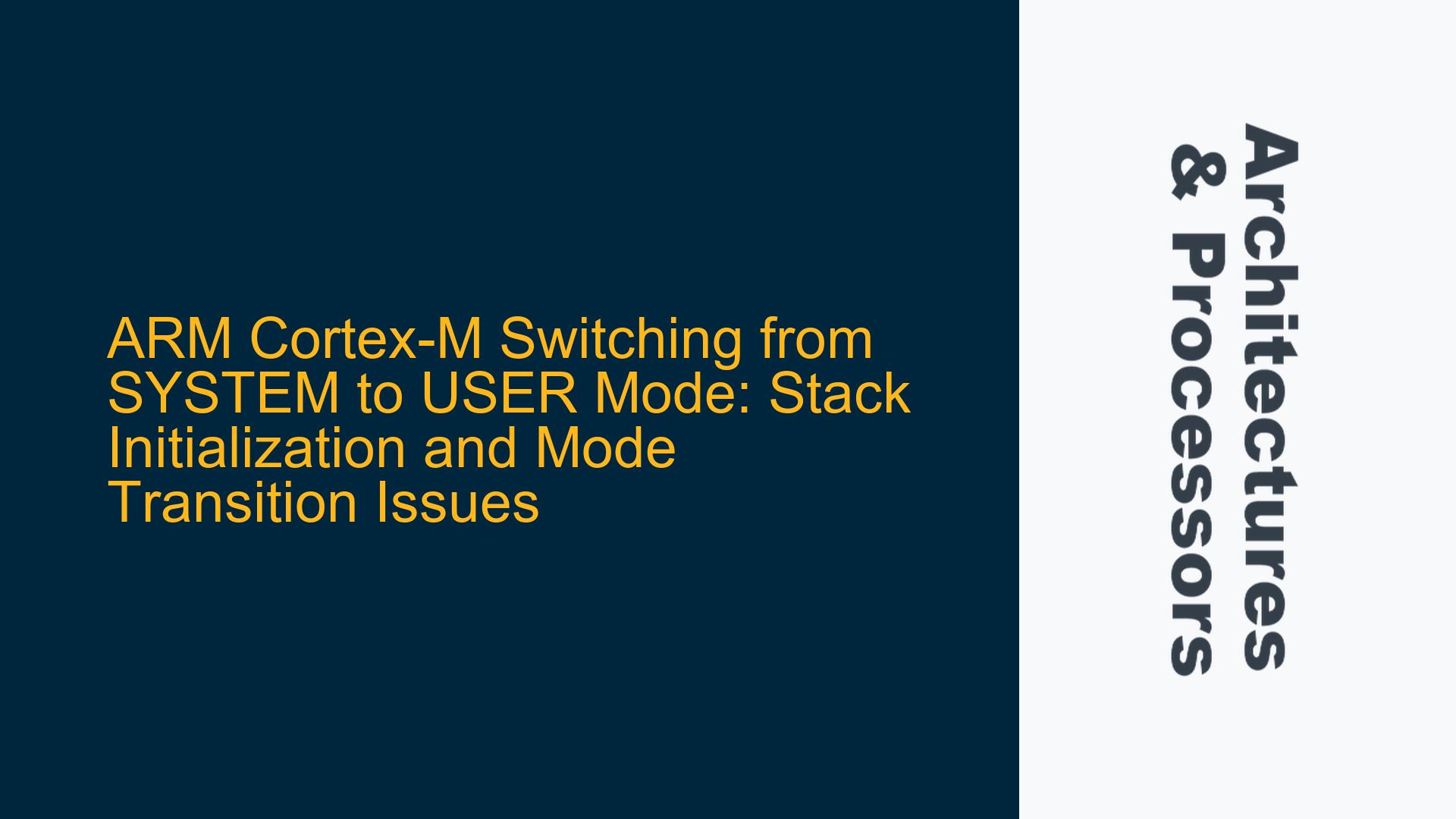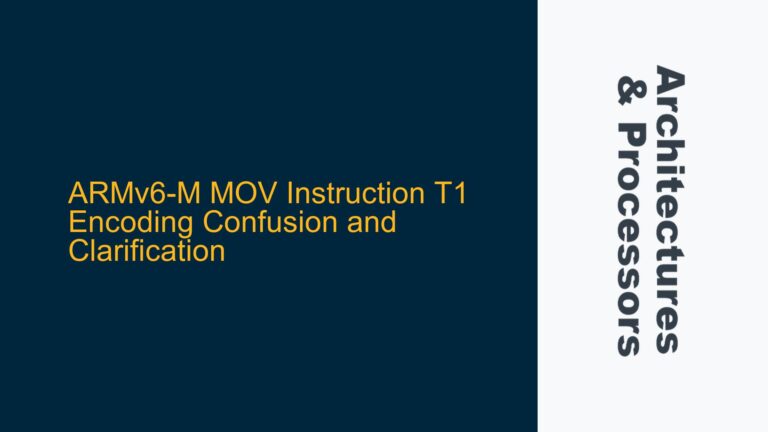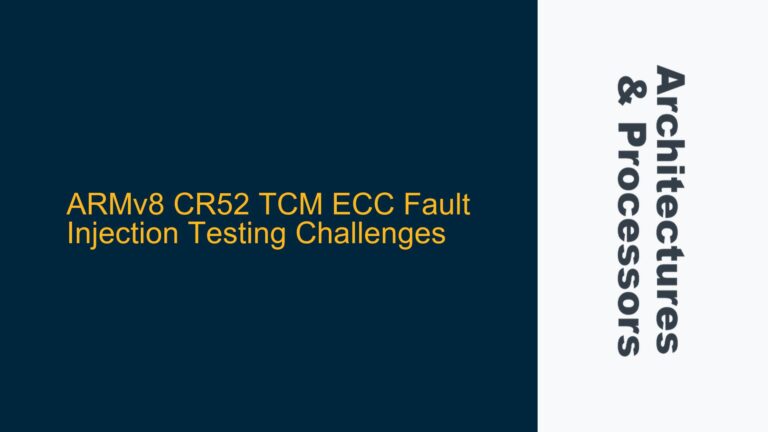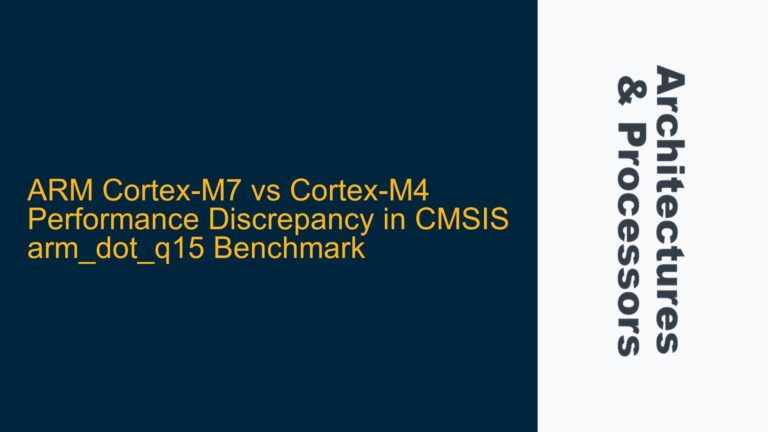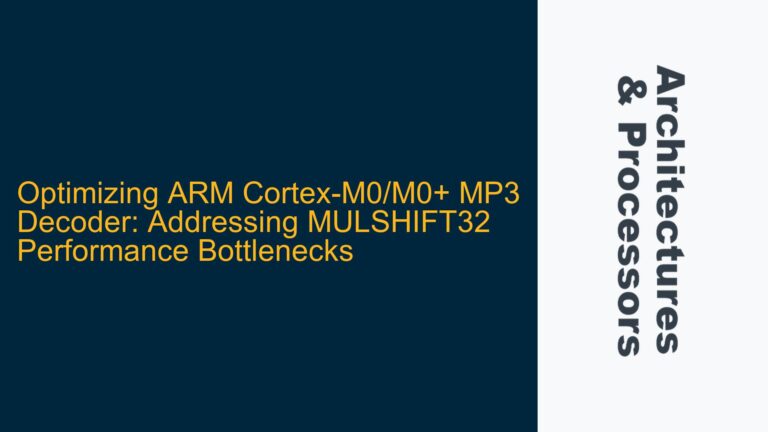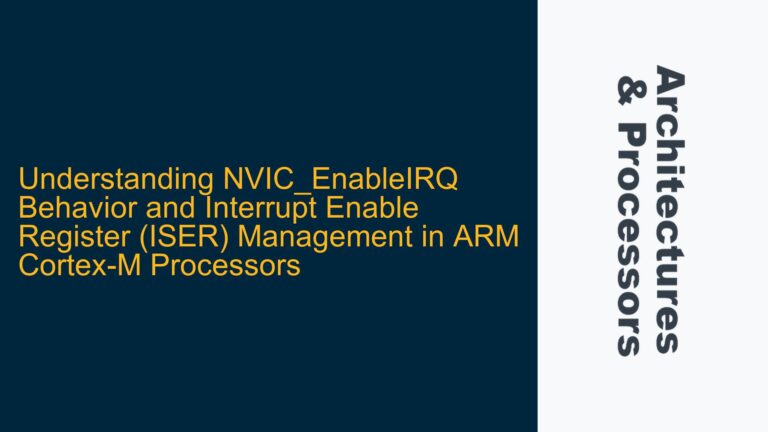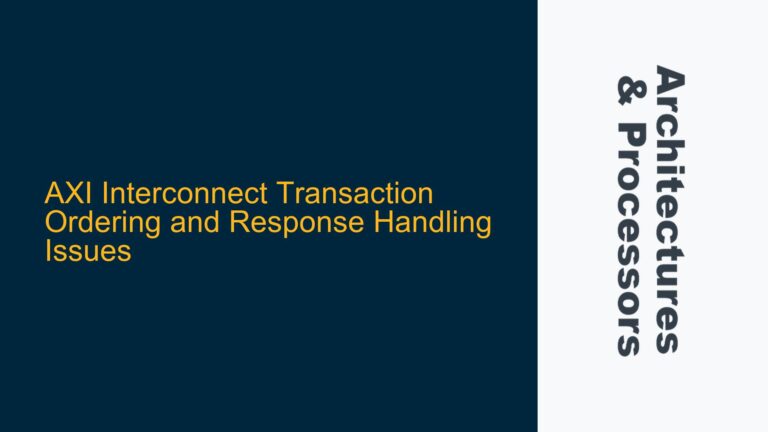ARM Cortex-M USER Mode Transition Failure Due to Improper CPSR Handling
The core issue revolves around the inability to successfully transition from SYSTEM mode to USER mode on an ARM Cortex-M processor. The user has configured the stack pointers for both SYSTEM and USER modes in the linker script and attempted to switch modes using assembly instructions. However, upon checking the Current Program Status Register (CPSR), the processor remains in SYSTEM mode (0x1F). This indicates that the mode transition is not occurring as expected, which prevents the software from running in the desired non-privileged USER mode. The goal is to test the Memory Management Unit (MMU) fault handler, particularly for permission faults, which requires the software to operate in USER mode.
The problem is compounded by the fact that certain operations, such as unmasking asynchronous aborts or modifying system registers like the Translation Table Base (TTB) Control Register and the System Control Register (SCTLR), require Privilege Level 1 (PL1) access. These operations cannot be performed in USER mode, which operates at Privilege Level 0 (PL0). This creates a catch-22 situation where the system must be initialized in SYSTEM mode but needs to transition to USER mode before executing the main application code.
Improper CPSR Configuration and Privilege Level Constraints
The root cause of the issue lies in the improper handling of the CPSR during the mode transition. The CPSR is a critical register that controls the processor’s operating mode, interrupt masks, and other system states. When transitioning from SYSTEM mode to USER mode, the CPSR must be configured correctly to reflect the new mode and privilege level. However, the user’s assembly code does not fully account for the constraints of USER mode, particularly the inability to modify certain CPSR bits once in USER mode.
The assembly code provided attempts to switch modes by directly manipulating the CPSR using the msr instruction. However, this approach does not guarantee a successful transition, especially if other system operations interfere with the CPSR. Additionally, the user attempts to unmask asynchronous aborts by modifying the CPSR’s A bit, which requires PL1 access. This operation cannot be performed in USER mode, leading to an undefined exception when the code attempts to execute it.
Another contributing factor is the use of inline assembly to initialize system registers and perform the mode transition. Inline assembly can be tricky to debug, especially when dealing with low-level system operations like mode switching. The user’s approach of using the cps instruction to switch to USER mode before branching to the main function is conceptually correct but fails due to the aforementioned privilege level constraints.
Implementing Proper Mode Transition with CPSR and Stack Management
To resolve the issue, the mode transition process must be carefully orchestrated to ensure that all system initialization tasks requiring PL1 access are completed before switching to USER mode. This involves a combination of proper CPSR handling, stack management, and strategic use of assembly instructions.
Step 1: Complete System Initialization in SYSTEM Mode
All system initialization tasks that require PL1 access, such as configuring the MMU, setting up the Translation Table Base (TTB) Control Register, and modifying the System Control Register (SCTLR), must be completed while the processor is still in SYSTEM mode. This ensures that these operations can be performed without triggering privilege violations.
Step 2: Configure the USER Mode Stack
The USER mode stack must be properly initialized before transitioning to USER mode. This involves setting up the stack pointer (SP) for USER mode in the linker script and ensuring that the stack is correctly aligned. The following assembly code demonstrates how to initialize the USER mode stack:
mrs r0, cpsr /* Get the current PSR */
bic r0, r0, #0x1F /* Clear the mode bits */
orr r0, r0, #0x10 /* Set USER mode bits */
msr cpsr_c, r0 /* Switch to USER mode */
ldr sp, =__usr_stack /* Load USER stack pointer */
Step 3: Transition to USER Mode Using movs pc, lr
Instead of directly modifying the CPSR to switch to USER mode, a more reliable approach is to use the movs pc, lr instruction. This instruction allows for a controlled transition to USER mode by branching to the main function while simultaneously switching modes. The following assembly code demonstrates this approach:
ldr lr, =main /* Load the address of main into the link register */
movs pc, lr /* Branch to main and switch to USER mode */
Step 4: Handle Privileged Operations in SYSTEM Mode
Any operations that require PL1 access, such as unmasking asynchronous aborts or modifying system registers, must be handled in SYSTEM mode before transitioning to USER mode. This can be achieved by encapsulating these operations in a separate function that is called during system initialization. Once all privileged operations are complete, the system can safely transition to USER mode.
Step 5: Debugging and Verification
After implementing the above steps, it is crucial to verify that the mode transition has been successful. This can be done by checking the CPSR after the transition to ensure that the processor is operating in USER mode. Additionally, the system should be tested to ensure that the MMU fault handler is functioning correctly and that permission faults are being handled as expected.
Example Implementation
The following example demonstrates a complete implementation of the mode transition process, including system initialization, stack configuration, and mode switching:
.global _start
_start:
/* Initialize SYSTEM mode stack */
mrs r0, cpsr
bic r0, r0, #0x1F
orr r0, r0, #0x1F /* Set SYSTEM mode bits */
msr cpsr_c, r0
ldr sp, =__sys_stack /* Load SYSTEM stack pointer */
/* Perform system initialization in SYSTEM mode */
bl system_init
/* Initialize USER mode stack */
mrs r0, cpsr
bic r0, r0, #0x1F
orr r0, r0, #0x10 /* Set USER mode bits */
msr cpsr_c, r0
ldr sp, =__usr_stack /* Load USER stack pointer */
/* Transition to USER mode and branch to main */
ldr lr, =main
movs pc, lr
system_init:
/* Perform system initialization tasks here */
/* e.g., configure MMU, set up TTB, modify SCTLR */
bx lr
main:
/* Main application code runs in USER mode */
/* Test MMU fault handler here */
b main
Conclusion
Successfully transitioning from SYSTEM mode to USER mode on an ARM Cortex-M processor requires careful handling of the CPSR, proper stack initialization, and strategic use of assembly instructions. By completing all privileged operations in SYSTEM mode before transitioning to USER mode, and using the movs pc, lr instruction for a controlled mode switch, the system can operate in USER mode as intended. This approach ensures that the MMU fault handler can be tested effectively, and that the system operates reliably in non-privileged mode.
